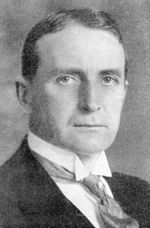|
Bjørn Helland-Hansen
Bjørn Helland-Hansen (16 October 1877 – 7 September 1957) was a Norwegian pioneer in the field of modern oceanography. He studied the variation patterns of the weather in the northern Atlantic Ocean and of the atmosphere. [1] He studied both medicine and physics at the University of Christiania (now University of Oslo). He developed the "Helland-Hansen Photometer" in 1910, which was carried on board Michael Sars. It was operated for the first time close to the Azores at a depth between 500 and m. In 1915 he became Professor of oceanography at the Bergen Museum, and in 1917 director of the Geophysical Institute, University of Bergen.[2] In 1933 he was awarded the Alexander Agassiz Medal. From 1946 to 1948, Helland-Hansen was President of the International Union of Geodesy and Geophysics (IUGG). He was a member of the Prussian Academy of Sciences and a member of the Member of the Academy of Sciences of the German Democratic Republic (DDR). Helland-Hansen trained Alexander Kuchin, the Russian oceanographer who went to Antarctica with Roald Amundsen. An island in the Russian Arctic, east of the Geiberg Islands, has been named Gellanda-Gansena after Helland-Hansen.  References
External links
|
||||||||||||||||||||||||
